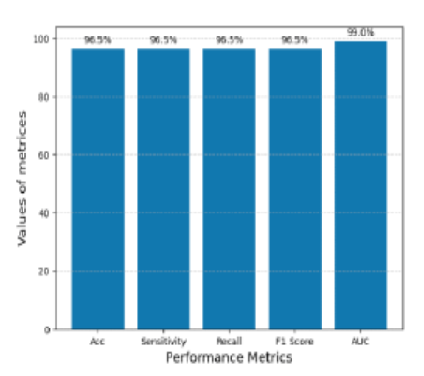


Indian Journal of Science and Technology
Year: 2024, Volume: 17, Issue: 13, Pages: 1263-1271
Original Article
Shwetambari Borade1*, Nilakshi Jain2, Bhavesh Patel3, Vineet Kumar4, Mustansir Godhrawala5, Shubham Kolaskar5, Yash Nagare5, Pratham Shah5,Jayan Shah5
1Assistant Professor, Cyber Security, Shah & Anchor Kutchhi Engineering College, Mumbai, Maharashtra, India
2Professor, Cyber Security, Shah & Anchor Kutchhi Engineering College, Mumbai, Maharashtra, India
3Professor, Computer Engineering, Shah & Anchor Kutchhi Engineering College, Mumbai, Maharashtra, India
4Founder & President, Cyber Peace Foundation, Delhi, India
5Student, Cyber Security, Shah & Anchor Kutchhi Engineering College, Mumbai, Maharashtra, India
*Corresponding Author
Email: [email protected]
Received Date:01 February 2024, Accepted Date:29 February 2024, Published Date:21 March 2024
Objectives: The objective of this research is to detect video deepfakes with a higher accuracy and provide optimum results. The research aims to reduce time complexity for the media processing while simultaneously working on the model accuracy. Methods: This research has utilized CelebDF and FaceForensics++ Datasets for training and 32 epochs with the use of Single Nvidia Tesla T4 GPU. The above method of training and validating the model yielded error of <5% and is very capable. Using image scraping this model initially eliminates the unimportant areas of consideration. Thus, reducing the amount of scans that the model does in order to identify the face. This reduces that training to graph ratio and provides less error margin. Findings: This research’s findings reveal the model's robustness in detecting manipulated videos generated by deepfake techniques. Through extensive experimentation on diverse datasets, ResNet50 consistently demonstrated 97% accuracy, sensitivity, and specificity in distinguishing authentic content from deepfakes. The model exhibited exceptional generalization across various scenarios, including face-swapping and lip-syncing, showcasing its adaptability to evolving deepfake techniques. This research contributes to the already existing literature on ResNet50 deepfake detection tools. It contributes by adding the image scraping feature to the ResNet50 model and overcomes the gaps such as increasing error percentage of some of the models. The research of 1 has a 20% error percentage while this research has an error percentage of 5% with an accuracy of 97%. Novelty: The study employs ResNet50 to detect deepfake videos, utilizing novel image scraping techniques to minimize errors and enhance prediction accuracy.
Keywords: Deepfakes, Deep Learning, GAN, ResNet50, FaceForensics++, CelebDF
© 2024 Borade et al. This is an open-access article distributed under the terms of the Creative Commons Attribution License, which permits unrestricted use, distribution, and reproduction in any medium, provided the original author and source are credited. Published By Indian Society for Education and Environment (iSee)
Subscribe now for latest articles and news.